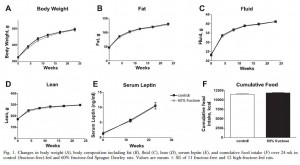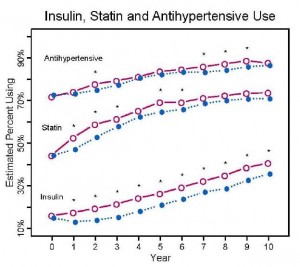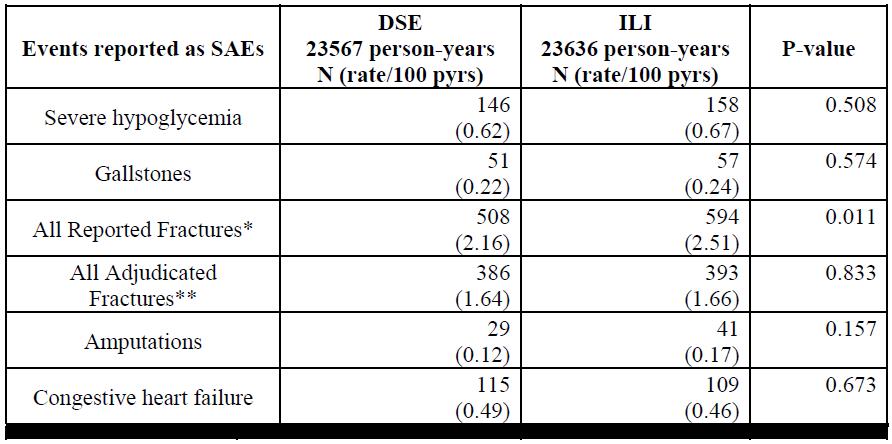but they actually get it right this time. Big HT to George Henderson for bringing this ms to my attention.
In Nutrition Disinformation, Part I, the Mediterranean diets employed by Estruch & colleagues were discussed. The study subjects’ need for antidiabetic drugs, insulin, and anti-platelets all increased over the course of 5 years. The media and even the authors themselves reported the opposite, touting the benefits of Mediterranean diets. Thus begat the Nutrition Disinformation series.
Nutrition Disinformation 2.0 was a follow-up to an older post on the Look AHEAD study, when the results were finally published. The intensive lifestyle intervention consisted of a pharmaceutical-grade low fat diet (ie, LFD + a little bit of Orlistat), and exercise. By the end of 10 years, medication use was modestly lower in the intensive lifestyle group compared to controls, but it was markedly increased from baseline. Therefore, I deemed it egregious to say their intervention was “healthy.” In the context of Nutrition Disinformation, “healthy” means you’re getting better. The need for insulin, statins, and anti-hypertensives should decline if you’re getting better.
In part 3 of the series, Yancy must’ve been following the Nutrition Disinformation series 🙂 and decided to conduct a subgroup analysis on the patients in his previous low carb vs. low fat + Orlistat study. Weight loss was roughly similar, but all other biomarkers improved more on low carb. In the new publication, Yancy analyzed data selectively from the diabetic patients in his original study to generate a “Medication Effect Score (MES).” MES is based on what percentage of the maximum dose was a patient given, and adjusted for the median decline in HbA1c experienced by patients on said drug. A bit convoluted, but I’m on board (at least tentatively).








